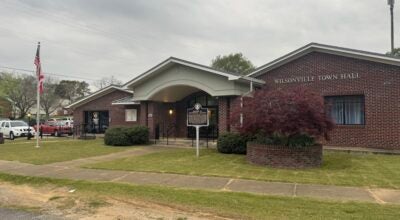Time to lead on prison crisis
Published 11:29 am Tuesday, November 8, 2011
Alabama is facing a crisis with its prisons — too many inmates and not enough beds. Alabama’s prison system is the most overcrowded in the country, operating in excess of 190 percent of design capacity. It is no longer a question of what can we do, it is now what do we have to do to contain correctional spending and better protect public safety. “Lock ‘em up and throw away the key” strategies are expensive propositions that would require significant spending to construct new prisons or contract with private prisons. Additional funding toward prisons takes away dollars from law enforcement in local communities and prosecutors.
Construction of new prisons is expensive. A new 1,500 bed prison would cost a minimum of $80 million and require additional money each year for staffing. As former Alabama Attorney General Bill Pryor noted, it is extremely difficult for private prison companies to achieve greater efficiency given the budget for Alabama prisons. Recently, the U.S. Supreme Court ordered California — the second most crowded prison system — to reduce the number of its inmates by 46,000 in two years. How much will this endanger the people of that state? Alabama’s prisons are more crowded than California’s. If Alabama wants to retain control over those decisions and avoid a federal takeover of our prisons, we must act now to get the problem of overcrowding under control.
Sentencing reform is needed in Alabama to protect public safety and taxpayers’ money. Other states’ experiences, like Texas, tell us we can identify non-violent offenders that can be punished outside of prisons in the community and be held accountable. These offenders can be ordered to pay restitution and fees, undergo frequent random drug testing, and conform their behavior while paying for their own supervision to ensure they abide by the law. Republican legislator Jerry Madden successfully led the Texas initiative to contain correctional spending by incarcerating offenders “we’re afraid of” while finding alternative punishments for offenders “we’re mad at.”
Other states’ “tough-on-crime” policies have led to large correctional budgets. Arizona, of the famous Sheriff Joe, spends 17 percent more per prisoner than Alabama. Arizona now has a corrections budget of almost $1 billion and still growing. We cannot afford to continue throwing money at a system that could bankrupt our state budget.
Alabama must manage its money wisely and incarcerate violent offenders we all fear while identifying offenders who can be supervised in the community and transition back to being responsible citizens. Increased use of community supervision programs, faith-based initiatives and other alternative programs are needed to contain correctional spending while protecting public safety by reserving prison beds for violent offenders. In closing, we need to improve public safety while at the same time curtailing huge increases in correctional expenditures. Prison space must be available for violent offenders who pose a danger to society, and Alabama must better utilize alternatives to prison for offenders who can be supervised in the community.
Cam Ward is a state senator from Alabaster. Bennet Wright of the Alabama Sentencing Commission also contributed to this column.









